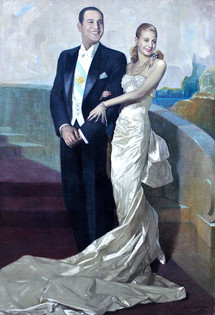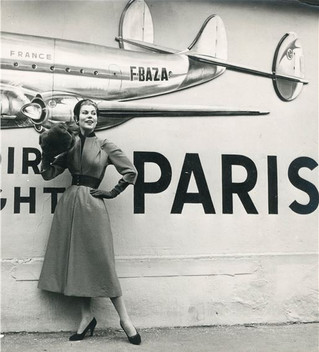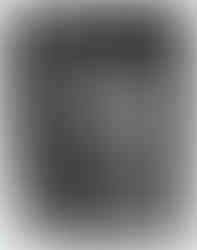Jacques Fath - Muses & the Beau Monde
- Lilium

- Dec 14, 2022
- 3 min read

Jacques Fath, born 6 September 1912 in Maisons-Laffitte, France, was a French fashion designer who was considered one of the three dominant influences on postwar haute couture, the others being Christian Dior and Pierre Balmain.
The son of André Fath, an Alsatian-Flemish insurance agent, Fath came from a creative family. His paternal great-grandparents, Caroline and Georges Fath, were fashion illustrators, writers and playwrights, and his paternal grandfather, Rene-Maurice Fath, was a landscape painter. Fath first studied bookkeeping and law at the commercial institute in Vincennes. He worked as a bookkeeper then as a trader at the Paris Bourse until 1932.

Fath presented his first collection in 1937, working out of a two-room salon on Rue de la Boetie. The studio was later moved to a second location on Rue Francois Premier in 1940 before settling into a third location at 39 Avenue Pierre-ler-de-Serbie in 1944. Among his models was Lucie Daouphars, a.k.a. Lucky, a former welder who eventually became the top house model for Christian Dior.
A self-taught designer who learned his craft from studying museum exhibitions and books about fashion, Fath hired a number of young designers as assistants and apprentices, some of which later went on to form their own houses, including Hubert de Givenchy, Guy Laroche, and Valentino Garavani.
Fath, who has been described by Italian journalist Bonaventuro Calora as extremely effeminate and a former lover of the French film director Léonide Moguy, married in 1939 to Geneviève Boucher. Fath had met Geneviève Boucher while in drama school. The bride was a photographer's model who had been Coco Chanel's secretary. They had one son, Philippe in 1943. According to Fath's friend Princess Giovanna Pignatelli Aragona Cortés, Geneviève Fath, who directed the business side of her husband's firm during his lifetime, was a lesbian.
Fath served as a gunner, second class, in the French Army. He received the Croix de Guerre with silver star and the Légion d'honneur. He also was held as a prisoner of war for a month, and was demobilized in 1940. During the rest of World War II, Fath was known for "wide fluttering skirts" which, The New York Times explained, "he conceived for the benefit of women forced to ride bicycles during gasoline rationing".
Fath also worked in film appearing in Scandal on the Champs-Élysées in 1949, directed by Roger Blanc and designing costumes for several films: Entre onze heures et minuit (1948),
Quai des orfèvres (1947), The Red Shoes (1948), La minute de vérité (1952), Genevieve (1953) and Abdullah the Great (1955).
A popular and occasionally innovative designer known for dressing "the chic young Parisienne", Fath utilized such materials as hemp sacking and sequins made of walnut and almond shells. His 1950 collection was called Lily, and its skirts were shaped to resemble flowers. For eveningwear, he advocated velvet gowns. His clients included Ava Gardner, Greta Garbo, and Rita Hayworth, who wore a Fath dress for her wedding to Prince Aly Khan.
Jacques Fath also dressed Eva Perón, who served as First Lady of Argentina from June 1946 until her death in July 1952, as the wife of Argentine President Juan Domingo Perón. In one of the few remaining paintings of the 1940s and 1950s not destroyed by the Revolución Libertadora in 1955 (three years after Evita's death), when Perón was ousted from power, Evita is depicted beside General Perón wearing a white evening dress designed by Fath. This same dress is showcased beside the painting on a mannequin under a protected glass cover in the Museo del Bicentenario in Buenos Aires, Argentina.
Jacques Fath died 13 November 1954 in Paris, France of leukaemia, which he'd been diagnosed with in 1952, aged 42. Approximately 4,000 people attended his funeral at St. Pierre de Chaillot Church in Paris.
The Fath design house closed in 1957. It was operated in its last days by his widow, who presented her first well-regarded collection for the fashion house in 1955 and who worked with three of her husband's former associates: Catherine Brivet (who previously had worked for Paul Poiret, Jean Patou, Pierre Balmain, Coco Chanel, and Cristóbal Balenciaga); Pierrey Metthey; and Suzanne Renoult (a fabric expert who had worked for Lucien Lelong; Elsa Schiaparelli; and Gaston Worth). After the company's haute couture operations ceased, it went into business producing perfumes, gloves, hosiery, and other accessories. Fath was the subject of a 1994 documentary film by Pascal Franck called Les Folies de Fath.
Reading Recommendations & Content Considerations
by by
Valérie Guillaume Jeromine Savignon
























































































































































































Comments